Top 10 Largest Religions In The World By Population
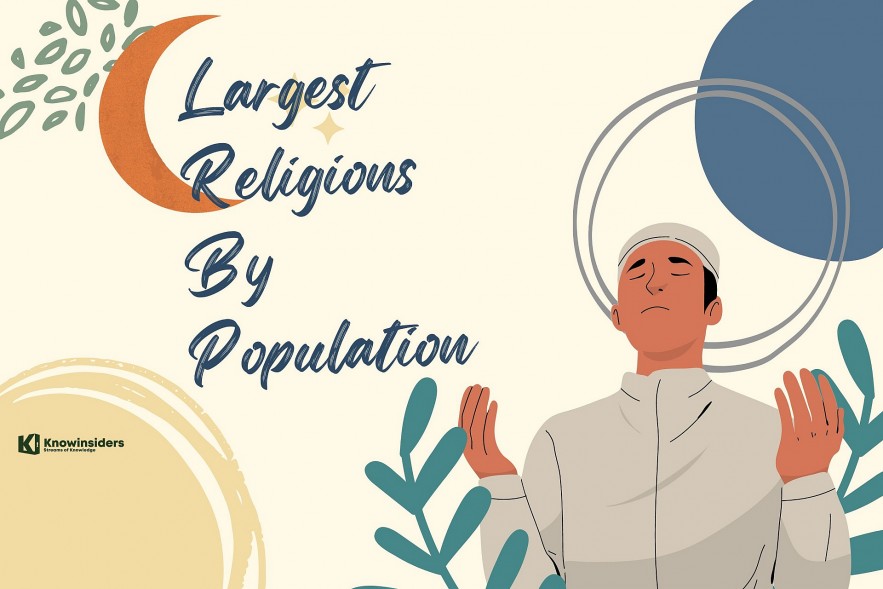 |
| Top 8 Largest Religions By Population In The World. Photo KnowInsiders |
Religion is an indispensable part of human spiritual life. Throughout the history of the world, religion has played an important and complex role. man.
What is Religion and Belief?
Belief: Though we may not be completely certain or able to provide evidence, belief is a mental state in which we hold that something is true. Everyone has opinions on life and the universe they live in. Belief systems, which can be religious, philosophical, or ideological, are made up of beliefs that reinforce one another.
Religion is a grouping of cultural frameworks, worldviews, and philosophical systems that connect mankind to spirituality and, occasionally, to moral principles. Many faiths include holy histories, symbols, myths, and traditions that are meant to explain the universe's origins or to provide purpose to existence. They frequently draw moral principles, ethical norms, religious precepts, or a preferred way of life from their conceptions of the universe and of human nature. […] Numerous religions have clergy, congregations of the laity, regular gatherings or services for the devotion of a god or for prayer, holy locations (either natural or architectural), and/or texts. They also define what defines allegiance or membership. Sermons, remembering a deity or gods' deeds, sacrifices, festivals, feasts, trance, initiations, funeral ceremonies, wedding services, meditation, music, art, dancing, community work, or other facets of human culture can all be included in the practice of a religion. There are, however, certain instances of faiths that don't include all of these facets of organization, belief, or rituals.
Whether or whether we identify as religious or spiritual, various belief systems in our surroundings and other religions have an impact on who we are. The way we understand a religion or belief system will also depend on other aspects of our identity, history, and how we see other groups who are deemed "different."
Religion was the cause of the Medieval Crusades, as well as the conflicts in the Middle East today. Read on to know Top 10 Largest Religions By Population.
Top 10 Largest Religions In the World By Population
1. Christianity-2.4 billion Believers
Countries: All over the world
The major global religions may be divided into two groups: Indian religions, which include Hinduism, Buddhism, Sikhism, and other faiths, and Abrahamic religions, which include Christianity, Judaism, and Islam. With more than two billion adherents, Christianity is the largest of the world's main faiths.
Christianity, which has been around for around 2,000 years, is founded on the life and teachings of Jesus. The Roman Catholic Church, Eastern Orthodox Churches, and Protestant Churches make up its three major groupings, and the Bible is its holy book. The number of Christians increased over time as it spread around the globe, frequently with the help of missionaries and colonists.
 |
| Christianity is the biggest religion in the world |
There are three main branches of ChristianityCatholicism, Orthodoxy, and Protestantism are the three main branches of Christianity, however there are many more denominations. The Church of the East, Oriental Orthodoxy, Eastern Orthodoxy, Catholicism, and Protestantism are the five primary divisions into which the religion can occasionally be further subdivided. Additionally, there are additional denominations within these branches. Catholics make up around half of all Christians and see the Pope as their most important spiritual figure. One of the many fascinating truths about Christianity is unquestionably this! |
Sunday is the holy dayIn Judaism, the holiest day is Saturday, and for Muslims, it’s Friday. But in Christianity, Sunday is regarded as the holy day of the week and this is also when people should rest. |
2. Islam-1.8 billion
 |
| Islam is the second biggest religion in the world |
Countries: Middle East, North Africa, Central Asia, South Asia, West Africa, East Africa, Southeast Asia, Albania, part of Russia, western provinces of China.
Islam is a religion belonging to the Abrahamic group, originating from Arabia. In Islam, Sunni Islam makes up for 70-90%. With a total number of followers of up to 1.5 billion, Sunni Islam ranks first in the Top largest religions in the world. Islam was founded by the Prophet Muhammad - who is believed by the followers to have adopted it. revelation of Allah the Most High - the only god according to Islam.
After the death of Muhammad, Islam split into two main lines, Sunni and Shia Islam. Sunni Muslims believe that the first four caliphs, the supreme disciples of Muhammad, are the heirs of Muhammad, who Allah has no other heir after Muhammad. These four caliphs later became the names of four sub-sects of Sunni Islam: Hanafi, Hanbali, Maliki and Shafi'i.
| Do you know…? The word “Islam” literally means ”peace” and “submission” – meaning, peace with humanity and submission to the edicts of God. There are two concepts here: duty owed to God and rights owed to fellow human beings – regardless of race, religion, or colour. Muslims are duty bound to do good to others and sacrifice their own interests for the welfare of other people. |
3. Hinduism-900 million
Countries: South Asia, Southeast Asia, Fiji, Guyana, Mauritus.
Hinduism is the name given to the main religious branches that are related and still exist in India. About 80% of Indians consider themselves Hindus and it is thought that there are around 30 million Hindus living abroad.
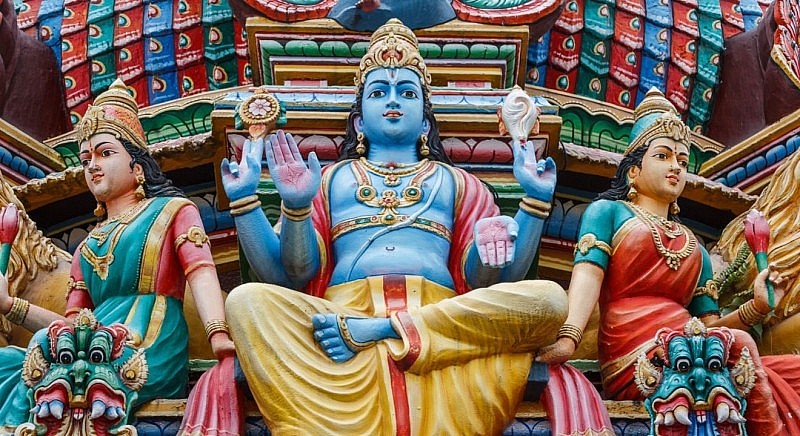 |
| Hinduism is one of the oldest religions in the world |
Hinduism is one of the oldest religions in the world. It has a complex origin, and entails a chain of doctrines and divine systems. The rich rites and beliefs reflect the great diversity of India, where up to a billion believers live. Hinduism is more than a religion. It is a culture, a habit of living and a code of conduct. This is reflected in a term Indians use to describe Hinduism: Sanatana Dharma, which means eternal belief or the way things are (truth).
The word Hinduism derives from a Persian concept to refer to the inhabitants of the regions outside the Indus valley, now a river in Pakistan. During the early 19th century, the word entered common English to describe the religious traditions that prevailed in South Asia, and today it is used only for Hinduism. The beliefs and practices of Hinduism are widespread, changing over time, and across individuals, communities, or regions.
READ MORE: Who Are The Native Americans: Culture, Traditions and Religions
4. Folk Religion-429 million
Any ethnic or cultural religious practice that deviates from the creed of organized religion is referred to as folk religion. The term refers to how people experience and practice religion in their daily lives and is sometimes referred to as popular or vernacular religion.
Folk or traditional religions were practiced by 429 million people, or roughly 6% of the world's population. African traditional religions, Chinese folk religions, Native American religions, and Australian aboriginal religions are a few notable folk religions.
5. Taoism-400 million
Countries: China, Singapore, Malaysia and overseas Chinese community, Vietnam, Japan, Korea.
Taoism or Xian Dao, is a branch of Chinese philosophy and religion, considered to be an endemic orthodox religion. The confirmed historical origins of Taoism are considered to be in the 4th century BC, when Lao Tzu's Tao Te Ching appeared.
Taoism is one of the Three Religions that existed since ancient China, paralleling Confucianism and Buddhism. These three internal (Confucian-Lao) and foreign (Buddhist) thought traditions have greatly influenced the foundation of Chinese national culture. Although there are many different points of view, all three of these teachings have merged into one tradition. The influence of the Three Religions in the field of religion and culture transcends China's borders and is transmitted to neighboring countries such as Vietnam, Korea, and Japan.
In China, Taoism has influenced the fields of politics, economics, philosophy, literature, art, music, nutrition, medicine, chemistry, dance, and geography.
Because of appearing in many different states and the difficulty of clearly distinguishing from other religions, the number of people who follow Taoism is not known. In particular, many Taoists live in Taiwan, where many schools of Taoism took refuge during the Cultural Revolution in mainland China. Currently, Taoism has about 400 million followers concentrated in China, Singapore, Malaysia, Taiwan and the overseas Chinese community.
6. Chinese traditional religion-394 million
Even if it is difficult to characterize this religious form, Chinese folk religion must be taken into account in any study of the Chinese people. Chinese folk religion is now largely acknowledged as a distinct system of beliefs and practices. In the past, it was occasionally believed in error to be a merger of Confucianism, Taoism, and Buddhism. Chinese Folk Religion is frequently practiced by many Chinese people who would intentionally declare they have no religious affiliation. Modern researchers came up with the concept of Chinese folk religion. It is novel to think of a religion as a distinctive element of culture. The word "religion" (zongjiao) first appeared in Chinese in the late nineteenth century.
In addition to practicing religion, a large number of people also adhere to a set of deeply entrenched cultural practices known as "traditional Chinese folk religion." Chinese religion is a complex fusion of ideas. Chinese religion is based on a combination of local folk beliefs and customs, Daoism, Buddhism, and Confucianism's religious tenets.
Eastern religions frequently do not exclude others but instead embrace other belief systems, in contrast to western faiths that are henotheistic and demand exclusive commitment. Furthermore, the Chinese folk religion's syncretic nature makes it simple to incorporate particular regional beliefs and customs. There is no need to abandon Chinese religion in favor of local religion.
7. Buddhism- 365 official followers and 1.2 to 1.6 billion unofficial followers
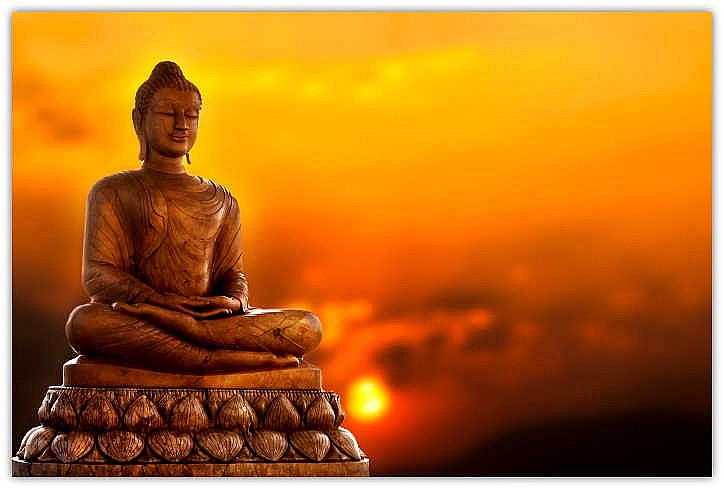 |
| A Buddhism statue |
Countries: East Asia and India, some Southeast Asian countries
Buddhism is a significant religion that originated in India as well. Siddhartha Gautama, the prince of the ancient Indian city of Kapilavastu (now in Nepal), founded Buddhism about the sixth century BC after becoming aware of life's suffering and setting out to discover a means to put an end to it. After years of begging, Siddhartha attained enlightenment and was given the names Shakyamuni (Shakyamuni), which means "Great Wise One," and Buddha (Buddha), which means "Enlightened One." He is regarded as the first Buddha to have attained Nirvana by escaping samsara.
Buddhism's primary tenets are to guide people toward doing good, away from doing evil, work hard to end suffering, end self, escape from samsara, and arrive in Nirvana (according to Buddha Shakyamuni) or the West. The Happiest State (according to Amitabha Buddha). Shakyamuni Buddha developed Buddhism, which expanded rapidly throughout India and to countries in West Asia before traveling over the Silk Road from West Asia to the East.
With the division into Hinayana and Mahayana, where Hinayana favors maintaining the fundamental and original while Mahayana favors growth and development, Mahayana Buddhism has interfered with other nations' beliefs in order to gain strength. affect. The Tang Dynasty is known for the widespread expansion of Buddhism in China. Tang Tang Xuanzang is said to have traveled to Western Truc in search of sutras, and from that point on, Buddhism expanded all throughout China thanks in large part to the Shaolin Temple.
8. Confucius-150 million
Countries: East Asia and the Overseas Chinese Community
Confucianism creates a religious concept of the Universe, although an impersonal one, despite dancing around spirituality and causing many to view it as a philosophy merely. In it, humanity's top objective is to work toward synchronization with the laws of the cosmos in order to become one with heaven for the peace of the group and the individual.
"Tin," a silent "God of Heaven" who is best interpreted as "the way things are," establishes this order.
9. African Traditional Religions-100 million
Africans follow many types of religion, with Christianity and Islam being the most popular. About 40% of Africa's population is Christian and 40% Muslim. The remaining 20% follow mainly indigenous African religions. A small number of Africans also adhere to Jewish beliefs, such as the Beta Israel and Lemba tribes.
Indigenous African religions tend to evolve around animism and ancestor worship. The general idea of traditional belief systems is to divide the spiritual world into "helpful" and "harmful". The world of beneficial spirits is generally believed to include ancestral spirits helping their descendants or spirits with the power to protect entire communities from natural disasters or attacks by humans. enemy; while the harmful spirit world includes the souls of murder victims who are buried without proper burial rites and the types of demons that mediums and grandmothers use. used to create disease for their enemies. While the impact of these primitive forms of worship is still ongoing and profoundly influential, those belief systems also evolved through contact with other religions.
The formation of the ancient kingdom in Egypt in the 3rd millennium BC marked the first known religious belief complex on the continent. Around the 9th century BC, Carthage (modern day Tunisia) was founded by the Phoenicians, and became the major cosmic center of the ancient world, in which the gods from Egypt, ancient Rome, and Etruscan water-city was worshiped.
The Ethiopian Orthodox Church has an official date from the 4th century, and is thus one of the first Christian churches to have been built elsewhere. At an early stage, the orthodoxy of Christianity had an influence in the present-day Sudan and other surrounding areas; However, after the spread of Islam, the development of Christianity slowed down and was restricted to the highlands.
10. Shinto-88 million
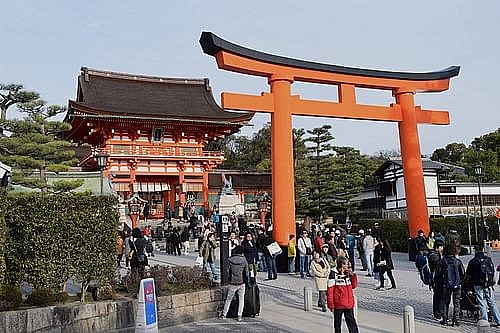 |
| A Shinto temple.Photo encyclopedia |
Country: Japan
Shint, which was formally founded in Japan in the eighth century CE, encourages the presence of several gods. Although it is not a formal religion in the conventional sense, many Japanese cultural customs are based on it.
In contrast to other faiths, Shinto's philosophy just encourages individuals to pursue purity and abstain from evil. It does not ban or compel them to do anything. It is customary nowadays to say Itadakimasu! before eating in order to express gratitude to beings who died in order to become food because killing is considered bad in Shinto and it is not recommended to kill creatures unless it is required for your own life. Killings of people or animals that are not worshipped turn them become wild gods.
Additionally, there are other varieties of demons, including ha dong, youkai, and (kappa)...
How Many Different Religions Exist in the World?→ Around 85% of people worldwide identify as members of a particular religion. → The five major global religions—Christianity, Judaism, Islam, Buddhism, and Hinduism—are the most well-known. → Religions contribute to society in a variety of ways, including by promoting moral behavior and virtues and by providing solutions to existential queries about life, God, and interpersonal relationships. |
 What is Ghost Month - Hungry Ghost Festival: Taboos, Meanings, Superstitions and Beliefs What is Ghost Month - Hungry Ghost Festival: Taboos, Meanings, Superstitions and Beliefs According to folklore in China, Vietnam and many countries in Asia, the 7th lunar month is a ghost month that brings bad luck and insecurity ... |
 Religion and Science Are Both Necessary in Life Religion and Science Are Both Necessary in Life Both science and religion are necessary and indispensable in human life. |
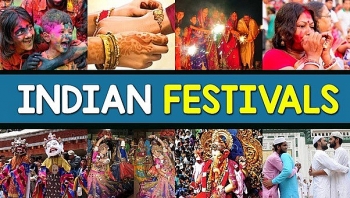 10 Most Dangerous Religious Festivals In India 10 Most Dangerous Religious Festivals In India India is one of the only few countries on this planet with a lot of different ethnic groups that managed to survive on the same ... |
























